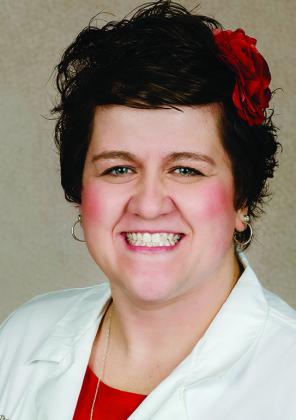WHEN IT COMES TO the prevention and early detection of lung cancer, knowledge is power. Having a strong awareness of the risk factors, symptoms, and screening options associated with lung cancer will not only help individuals at higher risk stay several steps ahead of this disease, but can also lead to better outcomes among those who already have it.
A key point to comprehend is that lung cancer continues to be a very serious and potentially deadly disease. In fact, according to the GO2 Foundation for Lung Cancer, lung cancer is the leading cause of cancer death in the United States and demands the largest amount of federal funding versus breast, colorectal, pancreatic, and prostate cancers.
Furthermore, lung cancer doesn’t discriminate, being the leading cancer killer of both men and women and of every ethnic group. It’s estimated that 237,000 Americans will be diagnosed with lung cancer this year alone.
In terms of mortality, the advent of more targeted treatments, such as immunotherapy and specific biomarker testing, has significantly improved the outlook for lung cancer patients. However, there is ample room for improvement. Melinda Campbell, CNP, of The Toledo Clinic Cancer Centers, notes that the five-year survival rate for lung cancer, though getting better, remains lower than the rate for many other cancers. “When detected at a localized stage, the five-year survival rate is 56 percent. Unfortunately, only 16 percent of lung cancers are diagnosed at an early stage. For distant tumors—or those that have spread outside the lungs—the five-year survival rate drops to only five percent.”
Most people are likely aware that the number-one risk factor for lung cancer is cigarette smoking, but Campbell emphasizes that it’s not the only potential cause and it’s unfair to assign stigma to lung cancer patients because they “brought it on themselves” by smoking. “If you have lungs, you can get lung cancer, and it’s estimated that 20 percent of all individuals diagnosed with lung cancer never smoked in their lives,” she states.
Other lung cancer risk factors include exposure to secondhand smoke, having undergone radiation therapy, exposure to radon, exposure to asbestos or other carcinogens, and having a family history of lung cancer. Campbell also cautions against making the assumption that vaping is a healthier alternative to smoking. “While the longterm effects of vaping are still being studied, we do know that most vaping fluids contain nicotine and other toxic chemicals. Compared to cigarettes, vaping fluids contain 15 times the amount of formaldehyde, which is linked not only to lung cancer but also to oral and bladder cancers,” she says.
As with many cancer types, lung cancer typically causes no obvious symptoms early on, but according to Campbell, as the disease progresses, patients often begin to notice signs such as unintended weight loss; fatigue/tiredness; a dry, hacking cough that doesn’t go away; chest pain; shortness of breath; wheezing; or coughing up blood, which is a major red flag. “That’s where being in tune with your body comes into play,” she comments.
Patient outcomes are far superior when lung cancer is detected and treated early—before symptoms arise. For smokers who meet specific criteria, a new, state-of-the-art protocol called low-dose CT lung cancer screening can be a real “gamechanger” when it comes to early detection and mortality reduction. Eligible patients are adults between the ages of 50 and 80 who have a 20-pack-year history of smoking (for example, having smoked one pack a day for 20 years or two packs a day for 10 years) and either continue to smoke or quit within the past 15 years.
“For individuals who don’t meet these criteria but are at increased risk of lung cancer, we can order a chest x-ray. Then, if an irregularity is noted, we can proceed to ordering a CT scan,” says Campbell.
n “In addition, we educate our patients on the importance of cessation and can refer them to tools and resources that can help them quit,” Campbell says.
She continues, “It all comes down to prevention. That means advocating for yourself, seeing your doctor for regular follow-ups, knowing your family history, and being aware of the things you’re exposed to in the workplace and in other areas of life.”
The Toledo Clinic Cancer Centers, located at 4126 N. Holland Sylvania Road, Suite 105, also provides imaging, laboratory, chemotherapy, specialized pharmacy, and IV services. The cancer center consists of 10 medical and 3 radiation oncologists along with 9 advanced practice providers. The cancer center also has satellite centers in Maumee, Napoleon, Bowling Green, Wauseon, and Monroe.
The Toledo Clinic Cancer Centers has earned Patient-Centered Specialty Practice recognition and Oncology Medical Home recognition from the National Committee for Quality Assurance. Oncology homes align systems and resources with coordinated care focused on cancer patients and their needs. This reduces fragmentation, supports shared decision making, and improves the patient experience. They are the first oncology practice in the state of Michigan and the second oncology practice in the state of Ohio to receive this recognition.
For more information, please call The Toledo Clinic Cancer Centers at 419-479-5605. ✲


